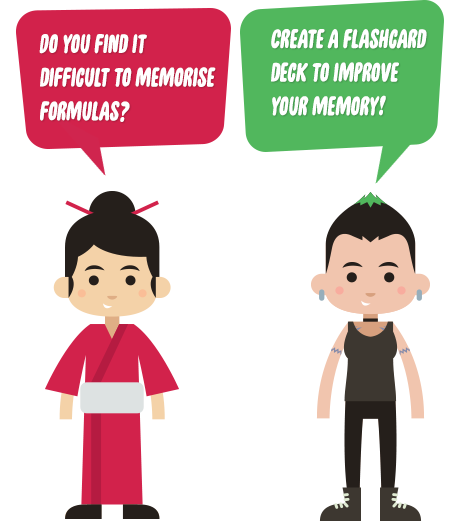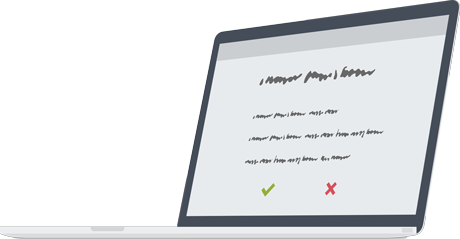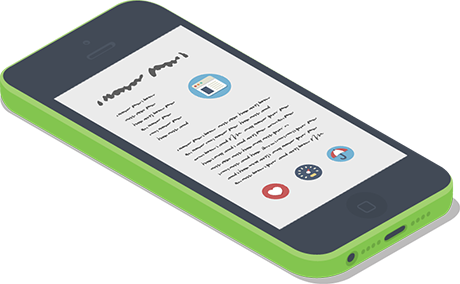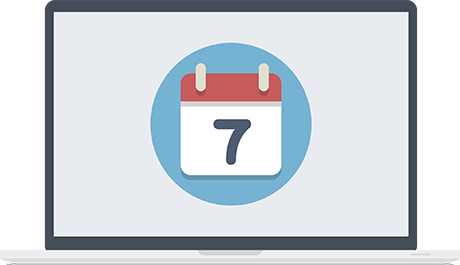GCSE Geometry & Measures
What stage of the process are you at? If you’re looking back over your notes revising GCSE Geometry, you will know that this topic involves much more than using your maths set to draw graphs, lines and angles.
This part of your GCSE Maths revision can get complicated as there is a lot to cover from trigonometry to measures and vectors plus all the formulas you need to know and apply to succeed in your exam. If you’re not a visual person, be aware that you may need to give this area more attention than others.
Luckily, we’re here to break it down for you and provide some sample resources so you can get started practicing questions for your exam. With GoConqr, you can easily create Mind Maps, Flashcards, Quizzes and more revision resources to get the grade you want in GCSE Maths.
Take a look below to understand this topic more clearly.

Geometry Formulas
No area of GCSE Maths is really safe from memorising formulas and geometry is no different. Here’s some of what you need to know:
- Circumference of a Circle: 2πr
- Area of a Circle: πr²
- Pythagoras’s Theorem: a² + b²= c²
- Trigonometry Formulas: Sine, cos and tan rule
Remember, you won’t be handed a sheet with these formulas in the exam so take note of what they are and how to use them. Even better, take a look at the New GCSE Maths Required Formulae Flashcards to the left. These have all the formulae you need to know, and you can even use our mobile apps to learn them on the go.
Sign up to browse more GCSE Geometry!Shape, Space and Measures
Your study of shapes won’t just include simple shapes like squares and triangles. This area of GCSE geometry will introduce you to parallelograms, trapeziums, cylinders, pyramids and more. Get to know these types of shapes and their properties.
You need to be able to convert from one metric or to another when learning about measurement. Calculating compound units involves using a formula with distance, speed and time to find the missing measure. Also, practice constructing shapes and angles plus how to bisect an angle. (You’ll have to get out your ruler and protractor!)


Transformations
Transformations in GCSE Geometry means changing how an object appears. Transformations can be either reflections in horizontal or vertical lines, or translations.
When you translate an object, you move it up or down but do not change its shape, size or direction. The original shape is referred to as the object while the transformed shape is the image. For GCSE Maths, you need to be able to describe translations as 2D vectors which leads into the next topic.
Vectors
Before moving on to revise vectors, ensure you fully understand transformations and how they are displayed on graphs. Once you feel you have enough knowledge to move on to studying vectors, start by learning the terminology and understanding how vectors are displayed as graphs, letters and columns.
A vector is a quantity with both magnitude (size) and direction, describing movement from one point to another. Aside from understanding the properties of vectors, you need to know how to add, subtract, multiply and enlarge using diagrams.

Trigonometry
Trigonometry is used to calculate to sides and angles of triangles. If you’ve mastered transformations and vectors than trigonometry should be a piece of cake for you! The Pythagoras Theorem comes into play alongside the sin, cos and tan rules. You need to remember these and when to use them so try drawing a diagram to help you to understand how these formulae work and commit them to memory.
The main purpose of using these formulas is to find the area, sides, angles and tangents of triangles. The difficult part here is deciphering three-dimensional problems. Remember, with maths practice is the key to getting top of the class!
 Previous:
GCSE Algebra and Number
Previous:
GCSE Algebra and Number 


